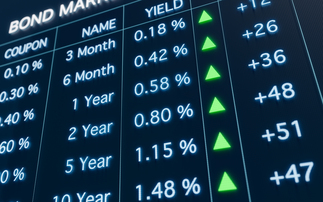
Jill Shaw is Senior Investment Specialist at Aegon Asset Management
Can you give a brief overview of your strategy in terms of what you are trying to achieve for investors, your investment process and the make-up of the investment team?
The Aegon Global Short Dated Climate Transition Fund is a simple, liquid and transparent short-dated bond strategy. The fund combines financial and climate considerations to aim to deliver a return of cash +1.25% gross of fees over rolling three-year periods, with at least 30% lower carbon intensity than the broader investable universe (as defined by BofAML Global Large Cap Corporate 1-to-5-year index).
Utilising our 19-strong* global responsible investment team, and a proprietary climate transition research framework, we categorise issuers according to their level of alignment with progress towards a net-zero economy to direct investments to companies that:
- Have a robust credible plan to transition towards a low carbon economy;
- Are better aligned with investors' net-zero goals
More broadly, it adopts a best-in-class ESG approach focused on issuers who we have identified as having the best ESG profile, with the lowest ESG risks.
The strategy has a global remit to maximise the opportunity set and adopts a benchmark-agnostic style with careful bottom-up security selection at its core to deliver risk-adjusted returns and help preserve our clients' assets.
Bringing 50* years of credit expertise, gained through many market cycles, the co-portfolio management team of Iain Buckle and Rory Sandilands combine dedicated short dated experience with a successful track record avoiding credit defaults. Together they draw on the deep resources of our dedicated global credit research team - 30 industry specialists across the quality spectrum - and the wider resources of Aegon's 140 global fixed income professionals*.
How are you positioning your portfolio for 2023?
The portfolio currently holds c45% in Euro assets, 27% in $US and 25% in £ bonds reflecting our view that European credit offers the most attractive spread opportunity at this point**.
Coming into 2023, our preference was to add duration, particularly in the US where we believed we were nearing the peak in interest rates. Duration was increased further in February adding European duration, where we thought the market's expectation for the ECB to take rates to close to 4% in the summer of this year could be too aggressive, especially if inflation data continued to slow sharply.
Forward rate expectations have shifted markedly following the recent bout of volatility and central bank action. Forward market pricing suggests the Fed has reached the top of the hiking cycle, while the market now expects multiple rate cuts by year end. In contrast, forward pricing in Europe and the UK expects the ECB and Bank of England to hike at least once more before taking a pause. Whilst inflation remains well above target, we expect it to start to fall quickly through the second half of 2023 and therefore we now prefer to take interest rate risk in Europe and the UK.
Can you identify a couple of key investment opportunities for your fund you are playing at the moment in the portfolio? This could be at a stock, sector or thematic level.
The opportunity in short dated investment grade remains compelling with potential for yield compression and spread tightening; dispersion opportunities; and relatively flat credit curves.
Recent turmoil in the banking sector permeated credit markets as the lagged effect of rapid monetary policy tightening and the end of Q.E. start to take effect.
In the subsequent flight to quality, government bond yields fell whilst credit spreads have widened significantly to compensate.
Short-dated credit spreads languish closer to October's wide levels, despite the better risk tone over the final days in March. The continuation of flat yield curves further highlights the risk-adjusted opportunity at the front end.
We see good opportunity to add selective bank exposure and attractive opportunities in subordinated insurance which widened over March in sympathy with the banking issues. Aggregate spread levels mask significant underlying dispersion, especially those credits perceived to carry higher market beta, so careful stock selection remains key.
Similarly, Central Bank decisions to continue to hike and the prospect of tighter lending standards, has increased concerns in the commercial real estate sector, which has been underperforming. However, there is still room to identify opportunities, for example within the logistics sector which is supported by strong structural tailwinds.
Jill Shaw is Senior Investment Specialist at Aegon Asset Management.












